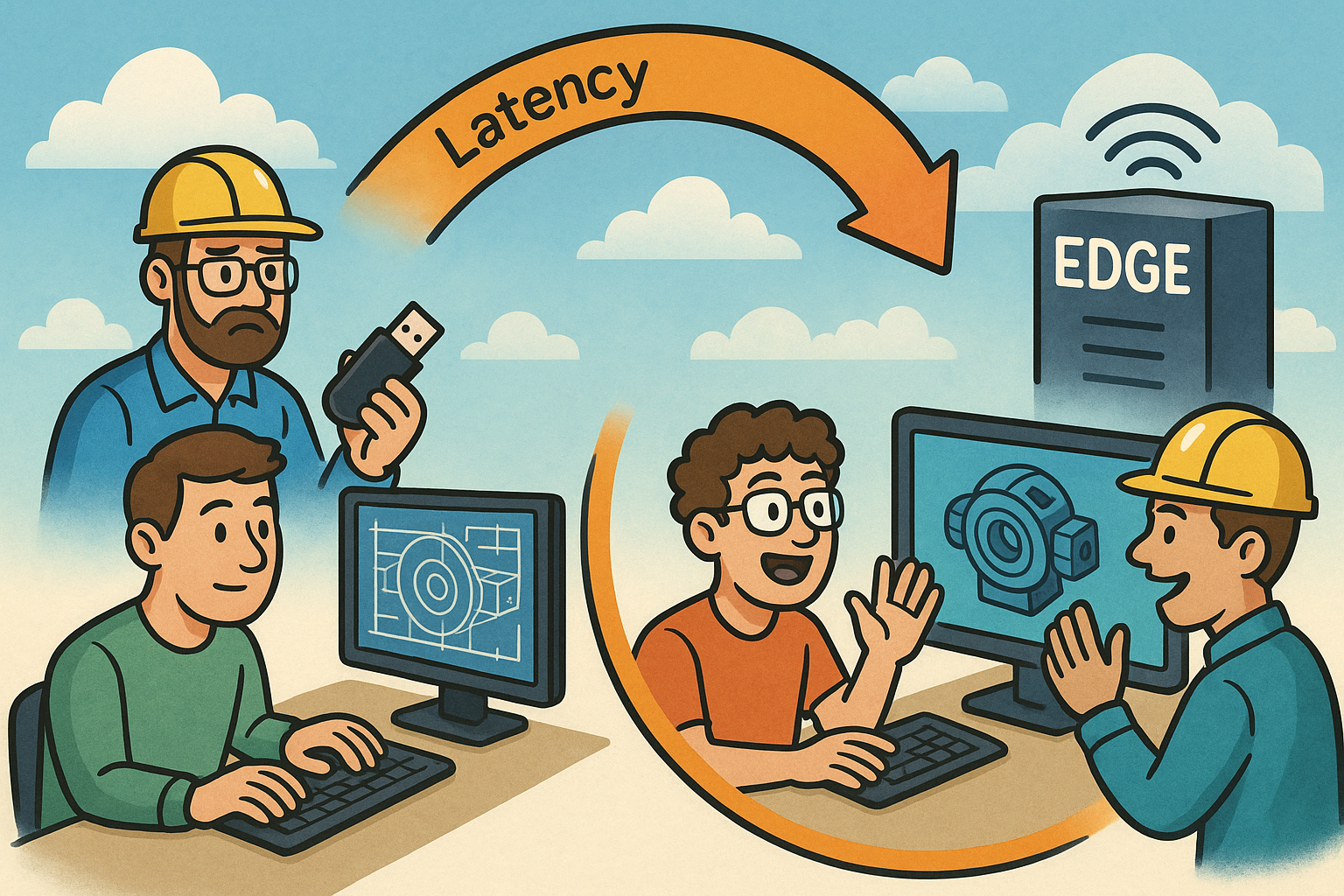Your Cart is Empty
Customer Testimonials
-
"Great customer service. The folks at Novedge were super helpful in navigating a somewhat complicated order including software upgrades and serial numbers in various stages of inactivity. They were friendly and helpful throughout the process.."
Ruben Ruckmark
"Quick & very helpful. We have been using Novedge for years and are very happy with their quick service when we need to make a purchase and excellent support resolving any issues."
Will Woodson
"Scott is the best. He reminds me about subscriptions dates, guides me in the correct direction for updates. He always responds promptly to me. He is literally the reason I continue to work with Novedge and will do so in the future."
Edward Mchugh
"Calvin Lok is “the man”. After my purchase of Sketchup 2021, he called me and provided step-by-step instructions to ease me through difficulties I was having with the setup of my new software."
Mike Borzage
Top 5 Ways to Supercharge Your Design Workflow with Asuni VisualARQ
October 18, 2024 3 min read


In the fast-paced world of architecture and engineering, the drive for efficiency and precision is ever-present. The ability to optimize design processes not only enhances workflow productivity but also contributes significantly to the overall quality of the project. Asuni VisualARQ, a robust plugin for Rhino, emerges as a formidable ally in this endeavor. Offering an array of tools and functionalities, VisualARQ empowers designers to elevate their workflows, ensuring that creativity is matched with efficiency.
This article unveils top strategies to harness the potential of VisualARQ, guiding users to streamline their design processes and ultimately achieve more refined outcomes.
Leverage VisualARQ's Parametric Object Library
Parametric objects present a dynamic approach to design, offering unparalleled flexibility and adaptability. With VisualARQ, these objects become the building blocks of innovation, allowing for significant enhancements in design consistency and precision.
The utilization of parametric objects ensures that any modification propagates seamlessly throughout the model, maintaining coherence and minimizing errors. This capability is particularly beneficial in complex projects where changes are inevitable yet need to be implemented swiftly and accurately.
To fully capitalize on the advantages of the parametric object library, consider the following:
- Customization: Tailor the parametric objects to meet specific project needs, ensuring that the library aligns with your design goals.
- Management: Regularly update and organize your object library to streamline access and enhance workflow efficiency.
Utilize the Grasshopper Integration for Advanced Design Automation
One of the standout features of VisualARQ is its seamless integration with Grasshopper, a leading platform for parametric design. This synergy opens up new avenues for automating repetitive and labor-intensive design tasks, allowing designers to focus on more creative and strategic aspects of the project.
By leveraging the power of Grasshopper, users can:
- Automate complex geometrical configurations, reducing manual intervention.
- Generate adaptive components that respond to varying design parameters.
To set up basic automated workflows, follow these steps:
- Launch Grasshopper within Rhino and load the VisualARQ components.
- Define the design parameters that will drive the automation process.
- Create a parametric script that outlines the desired outcomes and adjust as necessary.
- Test the workflow to ensure it meets project specifications, making refinements where needed.
Optimize Design Workflow with VisualARQ Styles
VisualARQ styles are pivotal in maintaining and enforcing design standards across projects. They serve as templates that can be applied consistently, reducing the time spent on repetitive tasks and ensuring uniformity in design output.
Creating and applying styles can significantly streamline workflow, and here’s how:
- Consistency: Use styles to apply uniform design attributes across various elements, enhancing coherence and reducing design errors.
- Efficiency: Quickly apply pre-defined styles to new projects, saving time and effort in the initial setup phase.
To manage and update styles effectively, establish a protocol for regular reviews and updates to ensure they remain aligned with evolving project requirements.
Enhance Collaboration with IFC Export and Import Features
In the realm of Building Information Modeling (BIM), the Industry Foundation Classes (IFC) format serves as a critical conduit for interoperability across diverse software platforms. VisualARQ's robust IFC export and import capabilities significantly enhance collaborative efforts, enabling smooth data exchange and integration.
By utilizing VisualARQ’s IFC features, teams can:
- Bridge the gap between different design and construction software, facilitating seamless collaboration.
- Ensure data integrity and consistency across project phases, reducing misunderstandings and errors.
Here’s a guide to exporting and importing IFC files effectively:
- Prepare your model in Rhino, ensuring all elements are accurately defined and attributed.
- Utilize VisualARQ’s export function to generate an IFC file, selecting the appropriate parameters and configurations.
- When importing, verify that all data has been correctly interpreted and adjust settings as necessary to preserve model integrity.
Efficient Documentation and Annotation Tools
VisualARQ equips users with powerful tools for generating precise documentation and annotations, which are crucial for clear communication and project validation. By automating the creation of schedules, sections, and elevations, it minimizes the potential for human error and enhances the overall quality of documentation.
Effective documentation can lead to:
- Reduced errors and rework by providing clear and detailed project information.
- Improved stakeholder communication, ensuring all parties have access to accurate and up-to-date information.
To maximize the benefits of VisualARQ's documentation tools, it is advisable to establish a set of templates and protocols that can be reused across projects, ensuring consistency and efficiency.
In conclusion, by implementing these strategies, users can significantly streamline their design processes with Asuni VisualARQ, unlocking new levels of efficiency and creativity. As technology continues to advance, staying informed about the latest features and updates is crucial for maintaining a competitive edge and fostering innovation within your projects.
Embrace the potential of VisualARQ, experiment with its features, and commit to continuous improvement to fully realize the benefits it offers in architectural and engineering design processes.
Also in Design News

Live Performance Budgets: Real-Time Cost, Carbon, Energy and Lead-Time in CAD/BIM
December 11, 2025 14 min read
Read More
Design Software History: From File-Shuttling to Edge: The Latency Evolution of Collaborative CAD and Real-Time Visualization
December 11, 2025 13 min read
Read More
Cinema 4D Tip: Cinema 4D Soft Body Quick Setup & Parameter Tuning
December 11, 2025 2 min read
Read MoreSubscribe
Sign up to get the latest on sales, new releases and more …


